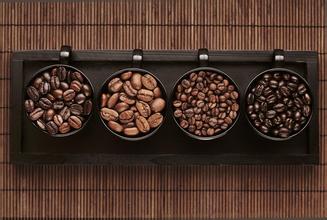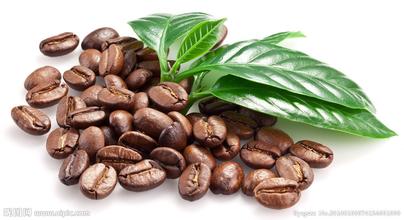Description of Flavor of Coffee beans in Jasmine Manor
Description of Flavor of Coffee beans in Jasmine Manor
In fact, the Arabs began to grow coffee in 525 BC, and chewing fried coffee beans became popular in the Arab region. In 890 AD, Arab merchants sold coffee beans to Yemen, and Yemenis made coffee beans into drinks for the first time. In the 15th century, coffee was introduced into Europe, Asia and soon into America. By the 18th century, coffee was widely grown in tropical and subtropical regions of the world and became one of the three major drinks in the world. Coffee ranks first among the top three beverages in annual sales, three times as much as cocoa and four times as much as tea. Although coffee has been cultivated in the world for more than 2000 years. However, coffee has been cultivated in China for only a few hundred years. In 1884, Taiwan Province began to introduce coffee.
Coffee tree is a shrub or small tree of Rubiaceae; leaves are opposite, leathery, long ovate; every March, the branches will appear white flowers, petals spirally arranged, the heart of the flowers jump around the petals, take a closer look, it is really like a small windmill playing in childhood, emitting the fragrance of jasmine flowers; the fruit is oval, berry, crimson, containing two seeds, that is, we are familiar with coffee beans. The first flowering period of the white flower red fruit coffee tree is about three years old. the white flowers have five petals and tube-shaped flowers, with a faint fragrance of jasmine, and the inflorescences are arranged in dense clusters.
In 1931, it was exported to Kenya in obscurity from Geisha Mountain Mountain in southwestern Ethiopia, wandered to Tanzania and Costa Rica, was transplanted to Panama in the 1960s, and then went through nearly half a century before it became a blockbuster, beating the victorious armies of Bourbon, Kaddura, Kaduai and Tibika to win the first prize of the Panamanian National Treasure Bean Cup Test Competition in 2005, 2006 and 2007. In 2007, the International famous Bean Cup Test sponsored by the American Fine Coffee Association (SCAA) won the championship again, and the bidding price was sold at US $130 per pound, setting a record for the highest price in the history of competition beans. It is reported that the later Panamanian national treasure bean competition will be divided into two groups: Rose Summer and non-Rose Summer, so as not to be robbed of the brilliance of other varieties by Rose Summer. Rosa is a member of the Tibika family, but it became famous more than 70 years after leaving Ethiopia, and fulfilled the saying that Ethiopia is a treasure trove of Arabica genes. Giving a variety to go abroad is enough to stir up trouble in the coffee market.
Geisha, which is grown in many parts of the world, is the new king of boutique coffee, with high quality and high prices in Latin American countries such as Panama, Guatemala and Colombia.

Important Notice :
前街咖啡 FrontStreet Coffee has moved to new addredd:
FrontStreet Coffee Address: 315,Donghua East Road,GuangZhou
Tel:020 38364473
- Prev

Grinding scale taste and flavor description of Pacamara coffee beans introduction to the characteristics of the manor area
The grinding scale taste and flavor of Pacamara coffee beans describe the characteristics of the manor production area. Pacamara beans are too large and often get stuck in the holes or gaps of the machine during peeling and separation in the treatment plant, so the machine must be adjusted from time to time to deal with separately. Due to the limited initial output of Pacamara and the rare fruits of large seeds in the country, most washing plants lack experience in dealing with large coffee fruits.
- Next

When the drip-filter brewing method is adopted, the American type drip-filter coffee machine is used for coffee beans.
When using the drip brewing method, the American drip filter coffee machine is used to fill the lower glass ball with boiling hot water, depending on the size of the coffee cup used to determine the amount of hot water, the average cup of coffee needs about 140~150c.c. Then fix the upper pot with the filter cloth on the base, pour in the ground coffee bean powder, and heat the water in the pot by alcohol lamp or other heat source.
Related
- Guji coffee producing area of Guji, Ethiopia: Humbela, Shakiso, Wulaga
- What is the most expensive variety of Qiloso in BOP multi-variety group?
- How to store the coffee beans bought home?
- Why are Yemeni coffee beans so rare now?
- Ethiopian Sidamo all Red Fruit Sun Sun Santa Vini Coffee beans
- SOE is mostly sour? What does it mean? Is it a single bean? what's the difference between it and Italian blending?
- Is Italian coffee beans suitable for making hand-brewed coffee?
- How to choose coffee beans when making cold coffee? What kind of coffee beans are suitable for making cold coffee?
- Just entered the pit to make coffee, what kind of coffee beans should be chosen?
- Can only Japan buy real Blue Mountain Coffee? What are authentic Jamaican Blue Mountain coffee beans?

